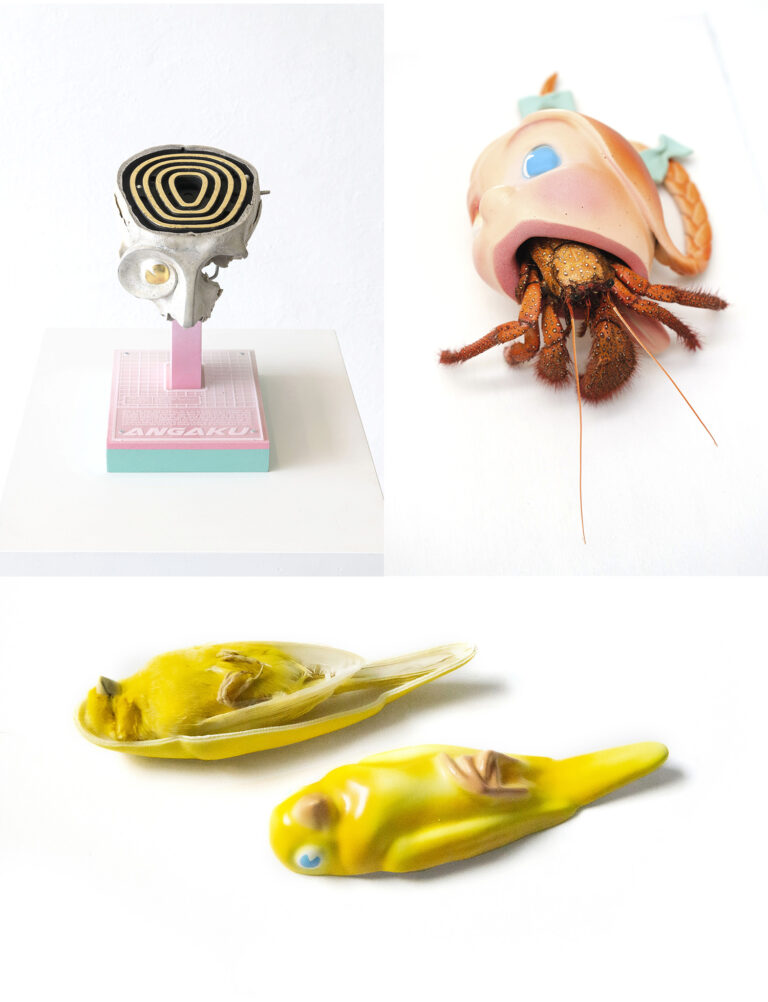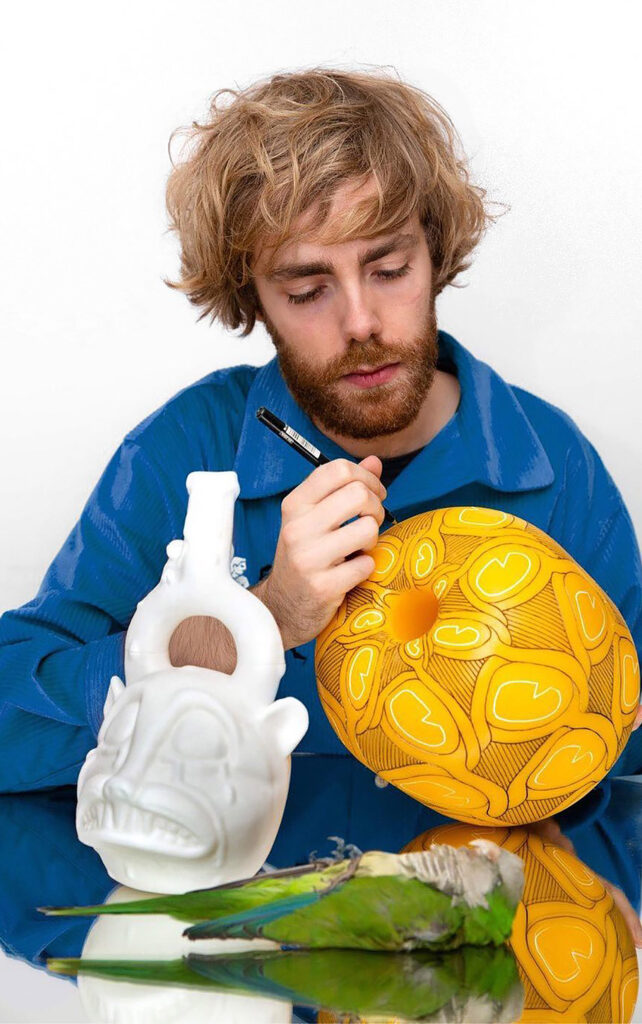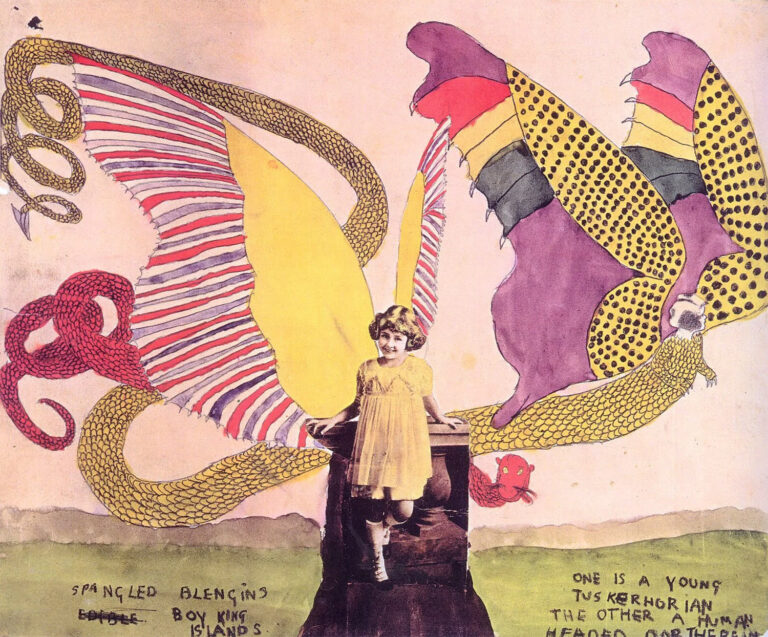
Charles Degeyter (25) is self-taught, does not shy away from any technique and flirts effortlessly with different cultures, eras and customs. Despite his young age, he has followed a path that is just as surprising as his oeuvre. He designed posters for Queens of the Stone Age, Nine Inch Nails and Weezer.

The daring combinations on these screen-printed posters bear witness to a distinctive visual approach that we find in his artistic work today. He recently exhibited paintings at the Tatjana Pieters gallery and created an immersive installation for the Verbeke Foundation. (website / Instagram)

Charles, I got to know you a few years ago through Yugen Kombucha. Your design is connected to the 'Mango Turmeric' flavour. How did this illustration come about?
Central to the drawing is a black panther. A special feature of this animal is that it's actually a rare colour variant of the normal leopard, which turns its fur black. A rare phenomenon called melanism, which makes their presence even more mysterious. The black panther embodies the perfect balance between elegance and mysticism. I find this kind of contrast, this tension between kindness and darkness, very interesting.

Yugen is a Japanese word that encompasses the feeling or experience that we are part of something bigger than ourselves. For example, when we see natural beauty. Can you recall such a Yugen moment?
‘Certainly. When I last visited the Louvre, after not having been there for years. I spend a whole day by myself in the museum. As I walked among all those highlights from various cultures, societies and eras, I was really touched. So much skill and beauty from so many different contexts, together under one roof: truly overwhelming. How certain parts of the collection were gathered is, of course, controversial.’
Suppose you could take 5 works from the Louvre, what would you choose?
‘Five works that touched me strongly were a painting by Turner, a still life by Goya, a Toba Batak sculpture from Indonesia, a certain sarcophagus from Ancient Egypt and the marble sculpture of the sleeping Hermaphroditus. The duality of this last sculpture always fascinates me. You see a beautiful sleeping woman, but walk around the statue and you see, strangely enough, that it's also a man. It's that unexpected, that sudden confrontation, which fascinates me. I also try to create that tension in my own work. Something that looks sweet, playful or even cute, but upon closer inspection also has that less accessible but intriguing side.’

If the time machine existed, what destination would you enter?
‘I would like to be an explorer in the Victorian era (England, 19th century). To explore unknown places, for example. Or, like Wallace, British naturalist and contemporary of Charles Darwin, to map the animal world of various island groups. Those travel reports are amazing to read. From an anthropological point of view, I would also have liked to visit different cultures, but with the right attitude, as Nicholas Maclay did. Not that problematic, paternalistic standpoint that we are more civilised, but rather to immerse myself in different cultures and learn the value of their customs and objects.’
Talking about islands and other cultures, you are currently working on 'Rupahu Island' for the Verbeke Foundation, can you give us a hint?
‘Rupahu means false in Maori. This imaginary island erupted from my imagination and is located a little further than the Easter Islands. I added an made-up civilisation to it, including fake rituals and utensils. The audience gets to see a fully detailed cabinet of this remote place. Moreover, the objects I made are presented as if they were made by these people. The viewer is thus misled. Is this real or not? The fact that the guides take the visitors around the museum as if it were true adds greatly to the illusion. The result is a kind of mega-cartoon that is easy to fall for. More than just an out-of-control amusement, this ethnographic collection raises some important questions about our perception of other cultures.’

Have you worked around rituals, real or not, before?
‘I like to create a kind of modern ritualism. By incorporating rituals from the past in a contemporary context and develop them with select modern techniques, an alienating whole is created. For example, I recently developed a number of toy sarcophagi for children that actually contain deceased (and stuffed) animals. This has something tangible and recognisable, however strange. In the meantime, some friends have already asked for such a sarcophagus for their deceased pets.’

Sarcophagi, stuffed animals, toys, old objects … what does your workspace look like?
‘I don't have a large studio at the moment, which means that when I'm working on a larger project, our house sometimes becomes a kind of colourful display window with all kinds of toys, masks, skulls and stuffed animals. Recently our house was broken into. A whole bunch of skulls, that Verbeke gave me to work with, happened to be on display in the living room. I think the thieves, out of pure bewilderment, left valuable materials such as my wallet and my friend's purse behind. They did take my slippers. My universe can be confusing sometimes.’
Who would you want to observe, like a fly on the wall?
‘Henry Darger (1892-1973), an outsider artist who worked all his life in silence and seclusion on a highly imaginative oeuvre. His controversial work unambiguously depicts various contrasts between good and evil. His drawings look charming but their undertones are extremely grim. In his universe 'the realms of the unreal', he shows a mystical fascinating world but at the same time deals with extremely heavy themes such as child abuse and war. A kind of imaginary universe that shows the beauty but also the grim reality of the world in which he grew up.’

‘I would also like to meet David Attenborough, to witness his curiosity. His documentaries left a huge impression on me as a child. I think those documentaries are enormously important in showing young people the value of the natural world. A world that we are unfortunately very distanced from. The engagement of people like Sir David is not only complete and authentic but also crucial.’

I can only agree with you, Charles.
To the beauty of diversity: Cheers!
Charles Degeyter (website / Instagram)
You can find the stories behind the other designs here.
 I like Yugen Kombucha
I like Yugen Kombucha
 J'adore Yugen Kombucha
J'adore Yugen Kombucha






